As President Trump strode toward the podium to deliver his 3rd State of the Union address, there was broad agreement across party lines about the kind of speech that would best serve his political interests.
The address would be upbeat and affirmative, in sharp contrast to the dark “American carnage” address he delivered as he took office in January 2017. It would underscore the progress Mr. Trump believes the country has made under his leadership. A key theme would be “promises made, promises kept”—on taxes, trade, regulation, immigration, and religious liberty, among other matters. He would focus on economic growth and job creation, where he receives the highest marks from the electorate. And he would argue that his foreign policy has kept our country safe while shifting more of the financial burden away from American taxpayers and toward our allies in Europe and East Asia.
An effective speech would also look forward to 2020 and beyond. The president would highlight issues—such as prescription drug prices and infrastructure—on which bipartisan progress could be made, even in an election year, while offering a vision of what can be accomplished during the next four years.
The tone of the speech would be healing. The president would say, as he has before, that he was not elected to do small things and that making big changes has aroused unavoidable controversy. Mirroring Bill Clinton’s State of the Union address in 1999, Mr. Trump would say nothing about his ongoing Senate trial on two articles of impeachment, and he would keep overtly partisan jabs to a minimum.
Overall, a president who has consistently stirred up his base at the expense of expanding his appeal would extend a rhetorical olive-branch to his adversaries in an effort to improve his standing with the swing voters whose choices could spell the difference between victory and defeat in November.
This speech would call upon President Trump to display self-restraint and magnanimity, not the qualities for which he is best known. Could he bring himself to deliver it?
This was, almost to the letter, the speech President Trump delivered. He rattled off key accomplishments—tax cuts, regulatory reduction, and “fair and reciprocal” trade agreements. He took credit for a strong economy, record-low unemployment, rising labor force participation, the growth in American factories, and record oil and gas production. He also claimed credit for replacing NAFTA, declaring “I keep my promises.”
President Trump emphasized his view that these measures were helping all Americans, including women, African Americans, veterans, disabled workers, and even those with less than a high school diploma. We are, he claimed, “in a blue-collar boom.” Other promises kept, he said, included 100 miles of the southern border wall with another 500 miles to follow, and the total reconstruction of the U.S. military.
In social policy, the president focused on measures likely to be popular with voters across party lines. Vocational and technical training in all high schools, reducing the cost of prescription drugs and other medical services, and increased investment in the fight against opioid addiction, Alzheimer’s, and AIDS. He touted paid family leave for federal workers and an increase in the child tax credit and promised new investments in infrastructure, including rural broadband.
There were combative moments of course. The president promised to protect the Second Amendment, ban late-term abortions, and attacked sanctuary cities. He castigated Medicare for All proposals, vowing that “We will never let socialism destroy American healthcare.”
Perhaps the most surprising element of the speech was President Trump’s repeated outreach to African Americans, from record funding for HBCUs (historically black colleges and universities) to invocations of Frederick Douglass and Harriet Tubman, to his salute to a ramrod straight centenarian, one of the last of the Tuskegee Airmen. This may signal an all-out effort to reduce Democrats’ margins among African Americans in key states.
All in all, President Trump’s speech represented the case he intends to take to the American people in his re-election campaign. By not mentioning Democrats’ efforts to impeach and remove him from office, by minimizing partisan jabs and focusing on proposals that could command support across partisan, class, and ethnic lines, he tried to take the edge off what has been a combative presidency and present himself as a leader who cares about all Americans, not just the base he has tended so assiduously during the first three years of his presidency.
The strategy behind the speech represents Mr. Trump’s best chance to broaden his appeal and win re-election—assuming that he can adhere to its tone and not blow it up with a series of provocative tweets down the road. If he sticks to the tone of the speech it remains to be seen whether it will induce enough swing voters to set aside their reservations about his character and conduct and focus instead on the promise of a less conflictual second term.
The Brookings Institution is committed to quality, independence, and impact.
We are supported by a diverse array of funders. In line with our values and policies, each Brookings publication represents the sole views of its author(s).

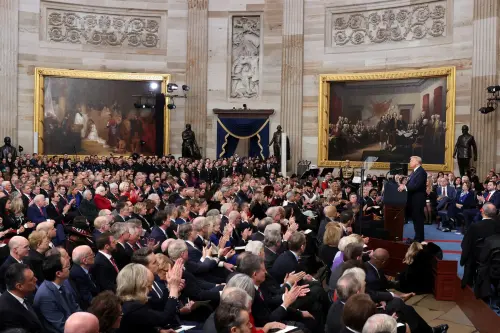
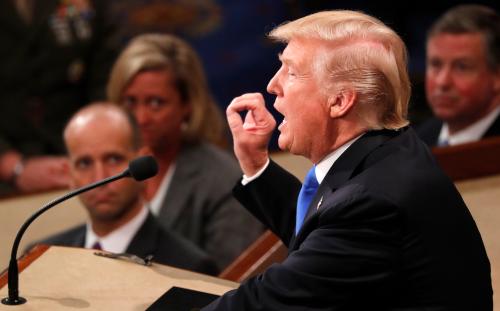
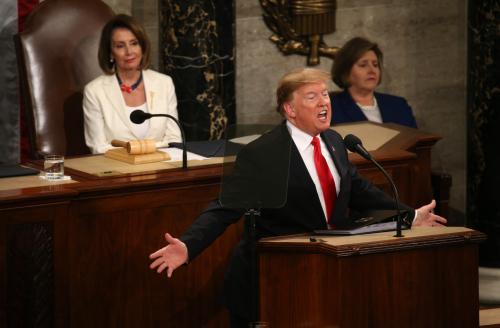





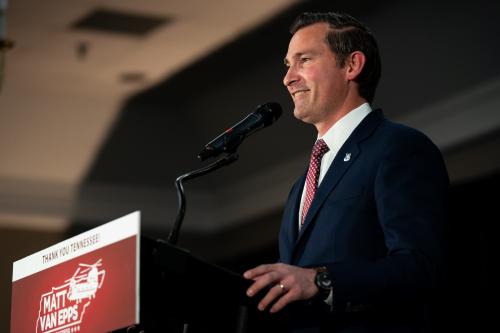
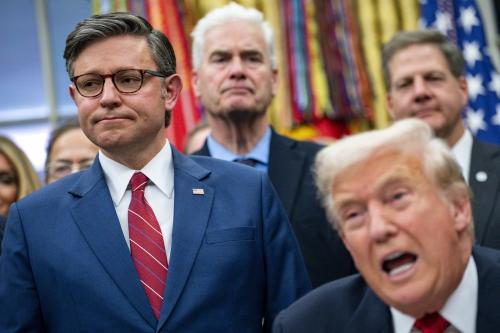
Commentary
State of the Union: A preview of Trump’s reelection strategy
February 5, 2020